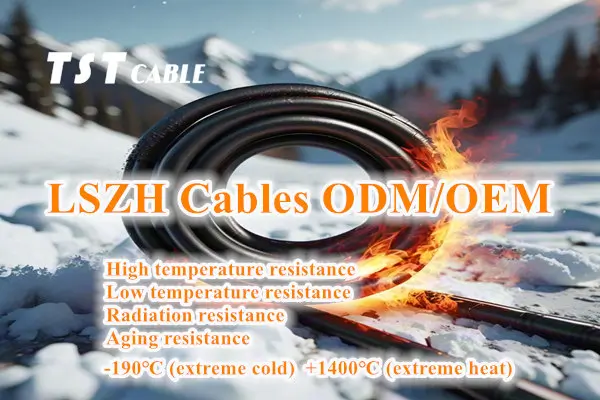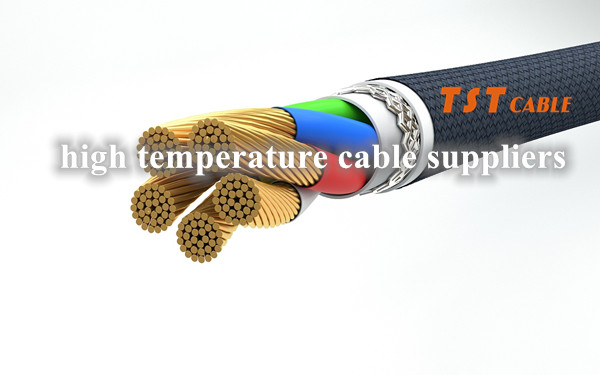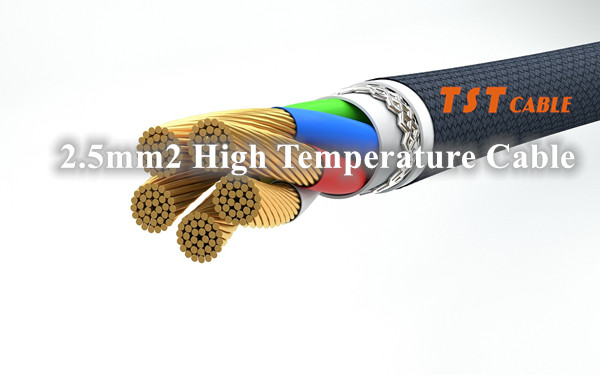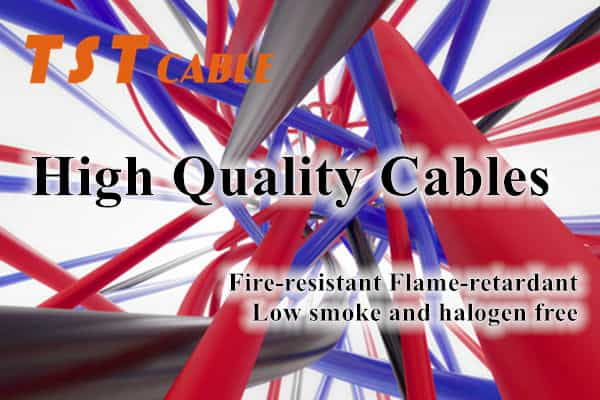
I. Characteristics
Irradiated cross-linked insulated cables have a number of excellent characteristics, including but not limited to:
Heat resistance: Irradiation crosslinked cables have a high temperature resistance rating of 105-150°C, which is a significant increase in heat resistance compared to 90°C for other crosslinking methods and 70°C for PVC.
Resistance to abrasion and environmental stress cracking: After irradiation cross-linking treatment, the molecular chain of the cable’s insulating material is cross-linked, which improves the resistance to abrasion and environmental stress cracking.
High flame retardancy: Irradiated cross-linked cables are not only flame retardant, but also have low smoke and low toxicity performance during combustion, which pays more attention to the low toxicity, fire prevention and reliability performance of the products.
Excellent electrical properties: irradiated cross-linked cable has better insulation properties, does not cause degradation of polymers due to unreacted catalysts, and improves electrical properties, thermal aging and material stability.
Second, application
Irradiated cross-linked insulated cable is widely used in many fields because of its high performance:
Power system: in power transmission, distribution and substation, irradiated cross-linked cables meet the requirements of high voltage and high temperature of the power system with its high insulation strength and thermal stability to ensure the normal operation of the power system.
Power supply for buildings and industrial facilities: in the power supply system of commercial buildings, residential communities, factories and workshops, etc., irradiated cross-linked cables ensure the stability and safety of power supply due to their good heat resistance, moisture resistance and radiation resistance.
Three,Material
The insulating materials of irradiated cross-linked insulated cable are mainly:
Polyvinyl chloride (PVC): PVC insulation is made by adding quantitative plasticizers, stabilizers, flame retardants and other mixes in PVC powder.PVC insulated cables are widely used in household appliances, network communications and other fields because of its excellent processing performance and low cost. But PVC also has some shortcomings, such as combustion will produce smoke and harmful substances.
Other insulation materials: In addition to PVC, irradiated cross-linked cable insulation materials also include fluoroplastics, cross-linked polyethylene, polypropylene and cross-linked EPDM rubber, etc., these materials have their own characteristics, suitable for different application environments and needs.
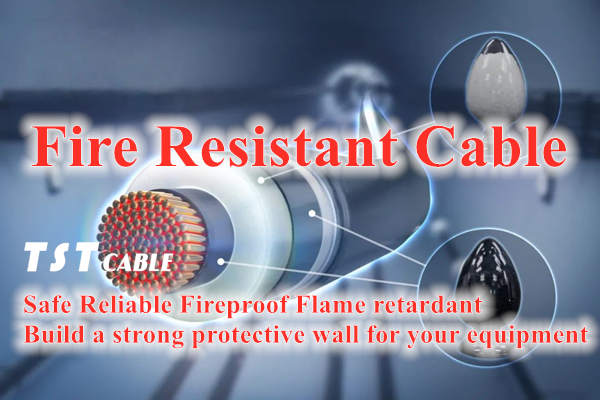
Fourth, the identification of irradiated crosslinked low-smoke halogen-free wires and cables
First, the product name identification method
Observe the product name of the wire and cable. Regular irradiated crosslinked low-smoke halogen-free wire and cable, its name is usually clearly marked as “irradiated crosslinked low-smoke halogen-free flame-retardant polyethylene insulated wire and cable” or “irradiated crosslinked low-smoke halogen-free flame-retardant polyethylene insulated low-smoke halogen-free flame-retardant polyethylene sheathed power cables”. If the product name and these standard names are different, it may be imitation products.
Second, the skin burning method
The use of a soldering iron or lighter on the wire and cable insulation layer burn test. If the use of a soldering iron hot insulation, there should be no obvious depression, otherwise the insulation layer using the material or process may be defective. If you use a lighter barbecue, under normal circumstances, the insulation layer should not be easy to ignite, and a long time after the burning of the cable insulation layer should still be relatively intact, no smoke and irritating odor, while the diameter increased.
Third, hot water immersion method
The core or cable into the 90 ℃ hot water immersion. If the wire and cable of good quality, its insulation resistance under normal circumstances will not drop rapidly, and should remain above 0.1 megohm kilometer. If the insulation resistance drops rapidly or even below 0.009 megohm kilometers, it means that the wire and cable may not have been treated with the appropriate irradiation crosslinking process.
Fourth, the density comparison method
Peel off a small amount of insulation into the water, observe its floating and sinking. As the density of low-smoke halogen-free materials than water, so if the insulation layer floats above the surface of the water, it can be determined that the material is not low-smoke halogen-free materials.
TST CABLES adopts advanced irradiation cross-linking technology, excellent heat resistance, halogen-free, low smoke, flame retardant, environmentally friendly and non-toxic, LSZH, LSOH, LSFH, XLPO, crosslinked polyethylene irradiation materials, with CE certification, UL certification, TUV certification, factory direct, complete certification, stable performance, support for customization, lightweight and convenient, easy to install and transport, reduce costs. TST CABLES irradiated crosslinked low smoke and halogen free wires and cables, make your electrical system more stable, safe and worry-free!
TST CABLES–Specializing in high temperature resistant cable applications and solutions
Fluoroplastic Cables|Polyimide (PI) Cables|Polyetheretherketone (PEEK) Cables|Silicone Rubber Cables
Rail way | Aviation | Marine | Nuclear | Oil & Gas | Wind Power industry applications
For more information on Silicone Cables,low-smoke, halogen-free, flame-retardant, high-temperature-resistant cables or to customize cables for your machinery or system, visit https://www.tstcables.com/product/
or send an e-mail to:lixiangchao@testeck.com
Also available in:
English



